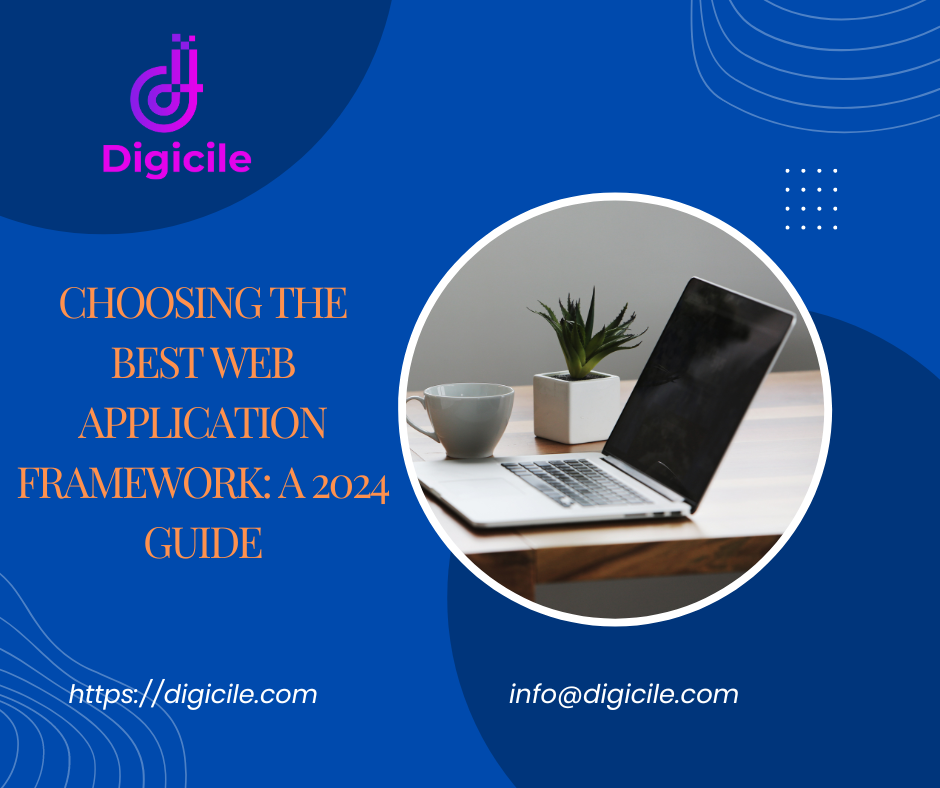Selecting the right web application framework is crucial for developers and businesses aiming to build scalable, efficient, and secure web applications. As we enter 2024, numerous frameworks cater to different needs and preferences, making the decision challenging. This guide aims to simplify the process by outlining key considerations, popular frameworks, and their unique strengths to help you make an informed choice.
Understanding Web Application Frameworks
Web application frameworks provide a structured approach to web development, offering libraries, tools, and conventions that streamline development tasks and promote best practices.
Key Considerations for Choosing a Framework
1. Programming Language
- JavaScript: Frameworks like React.js, Angular, and Vue.js dominate front-end development.
- Python: Django and Flask are popular for backend development due to their scalability and ease of use.
- Ruby: Ruby on Rails remains a robust choice known for its convention over configuration principle.
2. Scalability and Performance
- Evaluate how well the framework handles scaling with increasing traffic and data volume.
- Consider performance benchmarks and real-world use cases to gauge responsiveness and efficiency.
3. Community Support and Ecosystem
- A vibrant community ensures ongoing support, frequent updates, and a wealth of third-party libraries and plugins.
- Assess community forums, documentation quality, and active contributors.
Popular Web Application Frameworks for 2024
1. React.js
- Language: JavaScript
- Key Features: Component-based architecture, virtual DOM, flexibility for building UIs.
- Use Cases: Single-page applications, complex UI interactions, mobile apps.
- Ecosystem: Extensive library support (Redux, React Router), strong community, JSX for templating.
2. Angular
- Language: TypeScript
- Key Features: Full-fledged MVC framework, dependency injection, robust tooling.
- Use Cases: Large-scale applications, enterprise solutions, cross-platform apps.
- Ecosystem: Officially maintained by Google, comprehensive documentation, Angular CLI for scaffolding.
3. Vue.js
- Language: JavaScript
- Key Features: Progressive framework, easy integration, versatile for small to large projects.
- Use Cases: Single-page applications, interactive UI components, lightweight applications.
- Ecosystem: Growing community, Vue Router, Vuex for state management, Vue CLI for rapid development.
4. Django
- Language: Python
- Key Features: Batteries-included framework, ORM, admin interface, security features.
- Use Cases: Content management systems, e-commerce platforms, data-driven applications.
- Ecosystem: Django REST framework for APIs, Django CMS, extensive package ecosystem.
5. Ruby on Rails
- Language: Ruby
- Key Features: Convention over configuration, MVC architecture, ActiveRecord ORM.
- Use Cases: Rapid prototyping, startups, scalable web applications.
- Ecosystem: Active community, RubyGems for libraries, strong emphasis on developer productivity.
How to Choose the Best Framework for Your Project
1. Project Requirements
- Align framework capabilities with project goals, scalability needs, and desired functionalities.
2. Developer Experience
- Consider team familiarity with the language and framework, training requirements, and learning curve.
3. Long-Term Viability
- Evaluate framework stability, release cycles, backward compatibility, and vendor support.
Conclusion
Choosing the best web application framework in 2024 involves assessing technical requirements, project goals, developer expertise, and community support. Whether opting for the flexibility of React.js, the robustness of Angular, the simplicity of Vue.js, the scalability of Django, or the productivity of Ruby on Rails, selecting the right framework lays the foundation for successful web application development. By understanding these considerations and exploring the strengths of each framework, developers can make informed decisions that align with their project’s needs and objectives.






